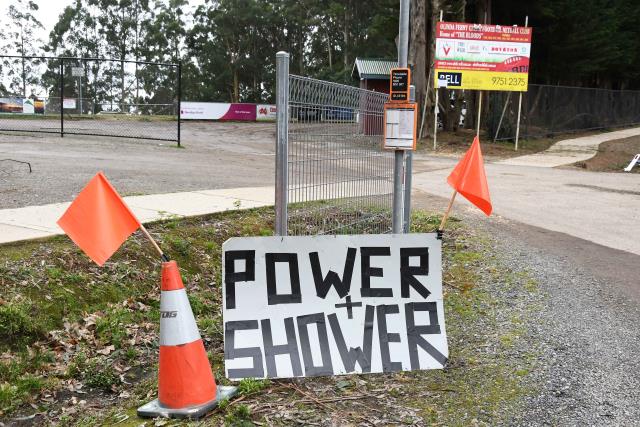
By Parker McKenzie
Emergency Management Victoria and VICSES have published a report assessing the damage, recovery and lessons for residents and government agencies of the June 2021 storm event with a meeting on Saturday 16 July described as “an opportunity to brief the community on the Extreme Weather Learning Review community report.”
Emergency Management Victoria is the statutory body responsible for leading emergency management in the state and is a part of the Department of Justice and Community Safety. It collected data for the report through 802 interviews of affected residents throughout Victoria, community debriefing and feedback collected during meetings organised by local councils and Bushfire Recovery Victoria, interviews with emergency management personnel, team debriefs and reviews from internal agencies, and files and observations submitted to EMV.
EMV Emergency Management Commissioner Andrew Crisp said in an online statement the input of the community was vital to the review.
“Impacted communities were grateful for the support they received from agencies and departments and other community members during and after the event, and we are working to ensure that in future emergencies, all communities experience that same level of support,” he said.
“However, there were challenges. Intelligence gathering, communication, and warnings were affected by the extreme weather and the significant impact on critical infrastructure including energy and telecommunications.”
According to the report, 69 per cent of Yarra Ranges and Dandenong Ranges residents accessed some form of support or recovery service since the storm weather event, compared to just 20 per cent overall throughout Victoria.
These services took the form of emergency financial assistance, emergency shelter, distribution of material aid, food and water supply, community relief information, psychosocial support, animal welfare, health and medical assistance and reconnecting family and friends.
It also established the impacts on the affected communities extend well past the event, a well-known fact to people living throughout the Yarra Ranges.
“Community members feel that due to the size and scale of this event, the clean-up and recovery process will take a considerable amount of time because of the amount of damage and quantity of work that still need to occur,” the report said.
“Some members continue to feel the physical and emotional impacts of this event due to its severity, the potential fire risk resulting from unremoved debris, and concerns of lack of follow up of support provided by agencies.”
The report also found the June 2021 weather event created the largest power outages in Victoria, as 330,000 customers experienced power outages, and at peak, more than 297,000 were without power, including 4,000 power dependent customers, with 68,000 customers remaining off-supply 72 hours after the event.
71 per cent of residents who responded to the survey reported losing access to at least one of power, telecommunications or internet, with 33 per cent reporting the loss of services ‘completely’ impacted their ability to receive emergency information during the extreme weather event.
“The high dependence on power and telecommunications to disperse messages, information and warnings were compromised due to the complex and widespread impacts of the extreme weather event,” the report said.
“Community members experienced difficulties and challenges in receiving emergency information via these traditional methods, prompting adaptation and customary approaches to obtaining vital information to inform decision making.”
The lack of alternate channels for communications when there was no power or telecommunications “created challenges during this event and resulted in reports of some community members being unable to access information in the days following.”
In response to the telecommunication issues, the report states the Victorian Government is “pursuing a number of avenues to improve the resilience of telecommunications networks during emergencies.”
These include co-investing in and supporting the Federal Government’s Strengthening Telecommunications against Natural Disaster package, Delivering mobile programs and participating in the Federal Mobile Black Spot Program and delivering the $500 million Connecting Victoria program.
So far through the Department of Jobs, Precincts and Regions Connecting Victoria Program, 54 locations across the state will get access to faster and more resilient broadband. None of the projects funded are located in the Yarra Ranges.
The Connecting Victoria Projects page on the DJPR website states it will “continue to partner with telecommunications providers to improve mobile coverage and broadband access in more places in outer suburban Melbourne and regional Victoria.”
“When selecting locations, we are considering existing gaps in connectivity and where infrastructure improvements will make the biggest difference for communities and businesses, particularly in terms of economic opportunities, safety and inclusion,” DJPR said.






